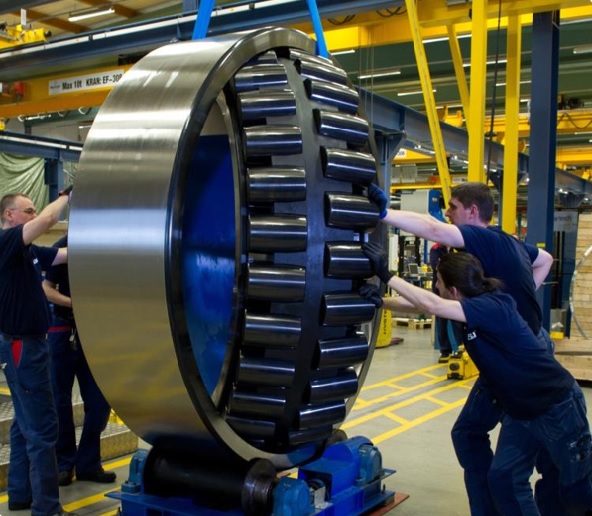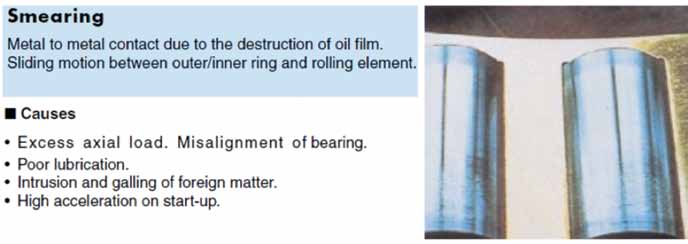An unexpected bearing failure needs to be understood and seen as an opportunity for improvements.
Centrifugal process pumps are workhorses of pulp and paper, oil and gas, chemical and other industries. Keeping them operating reliably with proactive maintenance programs is essential for consistent, uninterrupted production. Rolling element bearings are vital to a centrifugal pump's reliable operation, assuring shaft-impeller position and smooth rotation.
Rarely is mean time between failure (MTBF) an issue from normal wear and tear of a pump. Unexpected, premature breakdowns of a critical component, such as a bearing, might occur, resulting in lost production. Solving the problem quickly and getting up running with no recurrence is paramount.
Bearing Selection & Problem Solving
Critical root cause analysis of the pump and bearing system is essential to deal with the unexpected bearing failure. A centrifugal pump's performance, reliability and a root cause analysis in a rapid and relentless fashion should be a capability of a solid maintenance program.
Pump bearings and seals should be selected to suit the operating conditions of the application. All bearings must perform specific functions: they have to support the loads from power transmission through couplings and systems as well as the hydraulic loads imposed on the pump impeller and shaft.
Bearings must maintain axial and radial deflections within acceptable limits for the pump impeller and shaft seal, minimizing friction on the rotating assembly. Friction results in power loss, heat generation, increased noise and wear. It can also lead to premature bearing failure. Leading bearing manufacturers offer bearing designs, technology and advice for any application, whether low-pressure water pumping or the uncompromising conditions of the oil and gas industry.
Heavy duty applications—such as centrifugal pumps that must conform to API (American Petroleum Institute) standards—characteristically require angular contact ball bearings in sets mounted in the thrust position at the coupling end of the pump. This secures the pump impeller in the proper axial position while handling the thrust load and a slice of the radial load. Most of the radial load is typically managed by a single-row, deep groove ball bearing that floats in the housing near the impeller.
Industrial pump applications with light- and medium-duty service are usually specified to ANSI (American National Standards Institute) standards. Rolling element bearings for ANSI pumps are similar to API pump configurations with a single double-row bearing often replacing the angular contact bearing sets in the thrust position, with outwardly diverging contact angles that are inherently more rigid having greater resistance to misalignment.
Careful analysis must be employed to ensure that existing problems have not been caused by poor or incorrect installation, or shaft misalignment, and other potential root causes. Study of the pump bearings can provide clues to the reason for any pump issues such as misalignment of components, which should leave corresponding evidence of bearing ball path witness marks in the bearing raceway. Troubleshooting reference guides from bearing companies can be excellent tools for root cause analysis activity. Example information can be found in Figures 1 and 2.

Figure 1. Troubleshooting using premature bearing flaking

Figure 2. Troubleshooting by analyzing smearing on the bearings
Bearing manufacturers' guides are a resource to assist and help develop the knowledge and skills to find a fast solution and implement it.
Common Failure Causes
Most pump bearings fail early due to:
- Overheating breaks down the lubricant.
- Lubricant becomes contaminated with water or solids.
If a bearing seal in a pump fails, contaminants have an opening to infiltrate the bearing and foul the lubricant. Moving in the opposite direction, lubricant can be lost, leading to poor lubrication and eventual dry-running. Both contribute to pump over-heating.
The appearance and feel of the lubricating oil and the build-up of particulates in the oil cavity are evidence. An oil sample analysis will provide scientific data to help find the fault—such as water intrusion or unusual wear of specific components.
Lubricant contamination has the following effects on bearing life:
- Bearing wear is generally proportional to the amount of contaminating particulates.
- Water contamination in the lubricant decreases bearing life exponentially such that a fraction of a percent is enough to decrease the bearing life to more than half its original value.
- Contaminant particles larger than the oil film thickness between the bearing rolling elements are most detrimental.
- Contamination particles with a hardness equal to or greater than the bearing material's hardness will result in significant bearing wear.
- Cleanliness pays off maximizing bearing life.
Conclusion
Knowing the operating conditions and taking measures so that superior bearings are selected, correctly applied, installed and/or retrofitted with a clean environment for service and assurance of clean lubrication in service is vital. When a perfectly clean environment does not exist, bearing technologies that significantly increase bearing wear resistance and extend pump life are the best choice. Advanced carbon nitriding is a good choice to counter contamination exposure, especially when elevated confidence for mission critical applications is mandatory. A harder, more bulletproof carbon bearing running surface will resist contaminants. When clean homogeneous bearing steel is combined with advanced carbon nitriding, bearing fatigue life is significantly increased, and dealing with tough environments significantly is possible. Other bearing design and manufacture characteristics can enhance pump performance such as advanced internal geometry, surface finish, precision and cage design.
Careful bearing and technology selection can help provide valuable improvement that extends pump life and reduces maintenance intervals. Many bearing manufacturers have advanced solutions and technologies that can help reduce pump maintenance activity, increase production time and solve difficult-to-troubleshoot pump problems.
Pumps & Systems, December 2011


